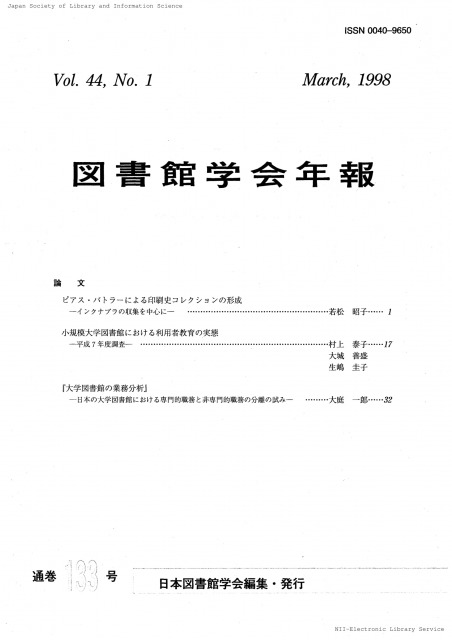Volume 24, Issue 2
Displaying 1-14 of 14 articles from this issue
- |<
- <
- 1
- >
- >|
-
1978Volume 24Issue 2 Pages 49-57
Published: 1978
Released on J-STAGE: October 07, 2022
Download PDF (1197K) -
1978Volume 24Issue 2 Pages 58-72
Published: 1978
Released on J-STAGE: October 07, 2022
Download PDF (1607K) -
1978Volume 24Issue 2 Pages 73-80
Published: 1978
Released on J-STAGE: October 07, 2022
Download PDF (1050K) -
1978Volume 24Issue 2 Pages 81-88
Published: 1978
Released on J-STAGE: October 07, 2022
Download PDF (1037K) -
1978Volume 24Issue 2 Pages 89-96
Published: 1978
Released on J-STAGE: October 07, 2022
Download PDF (922K)
-
1978Volume 24Issue 2 Pages 97-101
Published: 1978
Released on J-STAGE: October 07, 2022
Download PDF (639K) -
1978Volume 24Issue 2 Pages 102-105
Published: 1978
Released on J-STAGE: October 07, 2022
Download PDF (473K)
-
1978Volume 24Issue 2 Pages 106-108
Published: 1978
Released on J-STAGE: October 07, 2022
Download PDF (439K) -
1978Volume 24Issue 2 Pages 108-112
Published: 1978
Released on J-STAGE: October 07, 2022
Download PDF (745K)
-
1978Volume 24Issue 2 Pages 72,80,96
Published: 1978
Released on J-STAGE: October 07, 2022
Download PDF (360K) -
1978Volume 24Issue 2 Pages 96
Published: 1978
Released on J-STAGE: October 07, 2022
Download PDF (130K) -
1978Volume 24Issue 2 Pages 105,112
Published: 1978
Released on J-STAGE: October 07, 2022
Download PDF (254K)
-
1978Volume 24Issue 2 Pages 101,105
Published: 1978
Released on J-STAGE: October 07, 2022
Download PDF (251K)
-
1978Volume 24Issue 2 Pages 57
Published: 1978
Released on J-STAGE: October 07, 2022
Download PDF (99K)
- |<
- <
- 1
- >
- >|
